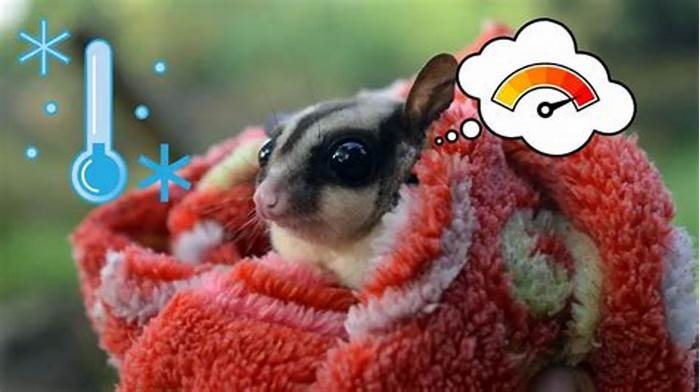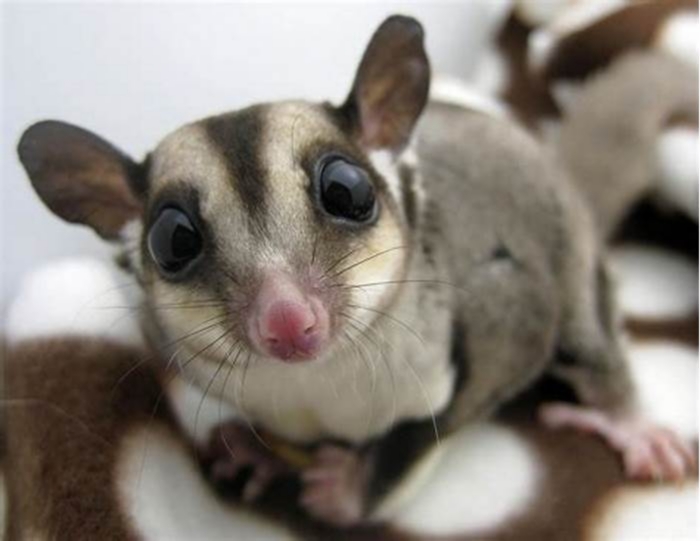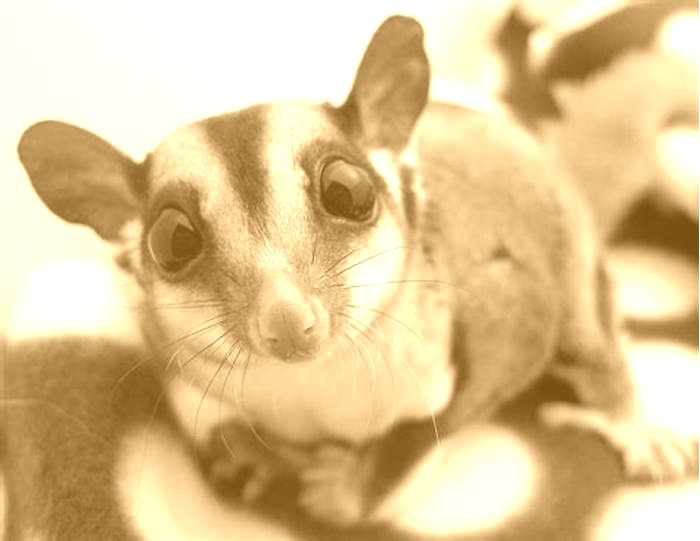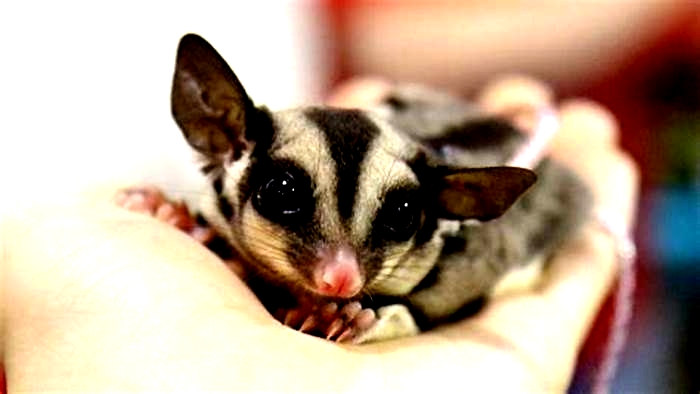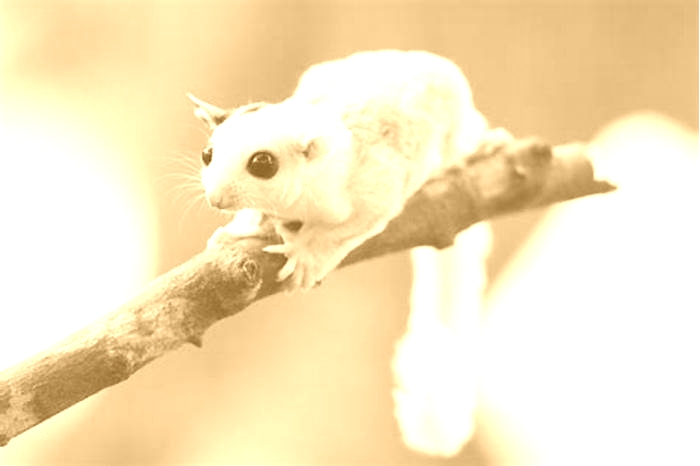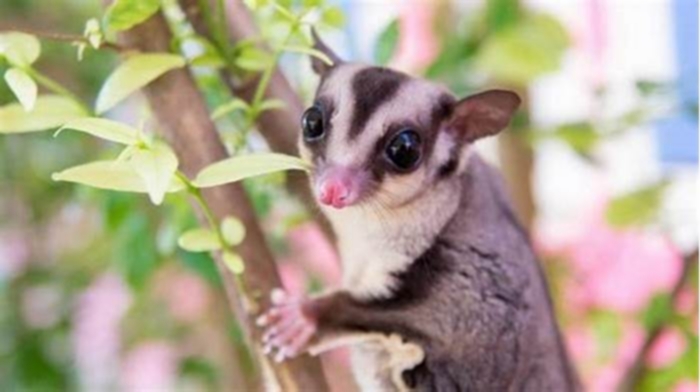What is too cold for a sugar glider
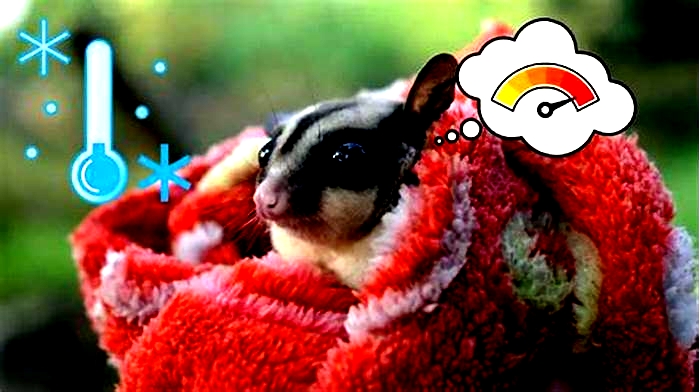
What Happens if a Sugar Glider Gets Too Cold
Sugar gliders are exotic animals that are native in warmer countries, such as Australia and Indonesia. They are very sensitive to changes in temperature and can get cold very easily.
If sugar gliders get too cold, they will start to shiver and their body temperature will drop. They will enter into a state of torpor, which is a type of hibernation. In this state, their metabolism will slow down and they will become very lethargic. If the sugar glider is not warmed up soon, they can enter into a coma and die.
In this article, we will talk about what are the signs of sugar glider entering torpor, how to tell if they are too cold and what to do if such events happen.
What happens if a sugar glider gets too cold
If sugar gliders get too cold they can get hypothermia. When their body temperature gets too low, it can cause serious health problems and even death. Sugar gliders are native to Australia and Indonesia where the temperatures are warm year-round. But in other parts of the world, sugar gliders can be at risk for getting too cold.
The ideal temperature for sugar gliders is between 80 88 degrees Fahrenheit (26 31 degrees Celsius) and in some cases it can go below to 60 degrees Fahrenheit (15 degrees Celsius). But if the temperature dips below this, they can start to experience health problems. Some of the symptoms of hypothermia in sugar gliders include weakness, lethargy, and shivering.
When too cold, sugar gliders enter a state of torpor. Torpor is when the body temperature and metabolism drops in order to conserve energy. The problem with this is that if the sugar glider doesnt warm up soon enough, the metabolism can drop too low and the sugar glider can die. Sugar gliders can stay in torpor for up to 30 hours, but no longer than this.
Signs of sugar glider entering torpor include:
Sugar glider becomes lethargic
This means that the sugar glider will move slower, be less active, and sleep more. They also will have a lose in appetite that can add several health problems to the little pet.
If this happens, try to give your glider his favorite treats to make sure he is getting enough to eat. Sugar gliders can go 3 days and a half without any food and only water, but you should make sure that such an extreme case should not be reached.
Sugar gliders fur looks fluffed up
This is the sugar gliders way of trying to trap heat and keep warm. If you notice this, its a good idea to try to warm up your sugar glider gradually.
One way to do this is to put him in a pouch or nest box lined with a soft, warm material like a fleece blanket. You can also put a heating pad on low underneath half of the pouch or nest box. Make sure the sugar glider can move away from the heat if he starts to feel too warm.
Cold to the touch
If your sugar glider feels cold to the touch, this is a sign that he is too cold and needs to warm up gradually as described above.
If you think your sugar glider is too cold, its important to seek veterinary care immediately, as hypothermia can be fatal.
Sugar gliders are very sensitive to temperature changes and can easily get too cold, so its important to be aware of the signs of hypothermia and take steps to keep your sugar glider warm.
Unresponsive or unconscious
If your sugar glider is unresponsive or unconscious, this is a medical emergency and you should seek veterinary care immediately.
What to do if my sugar glider gets into torpor?
If you think your sugar glider is in torpor, its important to seek veterinary care immediately as it can be fatal if not treated.
What can you do, is to always have a torpor kit prepared. Such kit means always having:
- Gliderade: This is a sugar glider rehydration drink that can help raise the blood sugar levels and give your sugar glider some energy. Mix 1 teaspoon powder to 5 teaspoons warm water;
- Honey: If you dont have Gliderade, honey can do the job;
- Heating pad: This can help warm up your sugar glider gradually;
- Oatmeal: This can help raise the blood sugar levels;
- Small syringes or pipettes: This can help you give the sugar glider honey or Gliderade if they refuse to eat. Just drop some liquid on their lips, and with some luck they will start to lick the pipette;
- Fleece Square: This can be used to line the bottom of the pouch or nest box so the glider can snuggle into something warm.
When getting into torpor, be sure that the sugar glider is hydrated as if they may survive 3 days without food, they cant go more then 12 hours without water. Dehydration will kill a sugar glider much faster then starvation.
If you are not sure how much time passed since your glider entered into torpor (maybe it happened over night, while you where sleeping), assume the worst and seek medical attention for your beloved pet.
How do I know if my sugar glider is too cold?
There are some clear signs that your sugar glider is getting too cold. This signs include:
Shivering
If you see your sugar glider shivering, this is a sign that he is trying to generate heat to warm up. This is a normal response to cold weather, but if the shivering persists, its a sign that the sugar glider is too cold and needs to warm up gradually.
Sugar gliders are very sensitive to temperature changes and can easily get too cold, so its important to be aware of the signs of hypothermia and take steps to keep your sugar glider warm.
Lethargy
Lethargy its the most common sign of a sugar glider getting too cold. If your sugar glider is normally active and playful, and suddenly becomes lethargic and uninterested in playing, this is a sign that he is too cold and needs to warm up.
Another common sign of a sugar glider getting too cold is if he stops eating and drinking. Sugar gliders need to eat and drink regularly, so if your sugar glider stops doing this, its a sign that something is wrong.
Weakness
If your sugar glider seems weak or unsteady on his feet, this is a sign that he is too cold and needs to warm up.
How can I keep my sugar glider warm in winter?
There are some things you can do to make sure your sugar glider stays warm in winter.
Air conditioning
In the winter, you can place the cage of your pet in a room that has an air conditioner. This way, you can set the air conditioner to a temperature thats comfortable for you and your sugar glider.
Cover The Cage With Blankets
You can also cover the cage of your pet with blankets to help keep him warm. Just make sure that the blankets are not too heavy or bulky, as your sugar glider could get tangled up in them.
Use a space heater or a heat lamp
You can also use a space heater or a heat lamp to help keep your sugar glider warm in winter. Just be sure to place the heater or lamp in a safe place where your sugar glider cant reach it and get burned.
Our recommendation is to never use heat rocks, as they can get too hot and burn your sugar glider.
Place fleece at bottom of the cage
You can also place a piece of fleece at the bottom of the cage to help keep your sugar gliders feet warm. Just make sure to clean the fleece regularly so it doesnt get too dirty.
Get your glider a companion
Sugar gliders are social animals, so getting your sugar glider a companion is a great way to help keep him warm in winter. Sugar gliders like to snuggle up together to stay warm, so having a buddy will help keep your sugar glider warm in winter.
Just make sure to get your sugar glider a companion that is the same size and age, as sugar gliders can be aggressive towards other animals if they are not the same size.
Conclusion
If you think your sugar glider may be too cold, its important to take action immediately and warm him up gradually. There are some things you can do to help keep your sugar glider warm in winter, such as using an air conditioner, covering the cage with blankets, or using a space heater or heat lamp. You can also place a piece of fleece at the bottom of the cage to help keep your sugar gliders feet warm.
Finally, getting your sugar glider a companion is a great way to help keep him warm in winter. Sugar gliders are social animals and like to snuggle up together to stay warm, so having a buddy will help keep your sugar glider warm in winter.
Do Sugar Gliders Get Cold Easily? {10 Ways To Keep Them Warm}
Are you thinking about temperatures becoming too cold for your sugar glider? Do sugar gliders get cold easily?
We have experience with this and wish to offer top strategies to help you make sure that your sugar glider is comfortable.
This article is dedicated to the warmth of your sugar glider in your care. Please check it out.
Do Sugar Gliders Get Cold Easily?
Yes. We noticed that our sugar gliders avoid drafty areas, direct sunlight and enjoy their warm pouches throughout the year. When they get cold, they can easily become torpid, unresponsive, inactive and difficult to interact with.
Sugar gliders and more comfortable and warmer conditions around 80F 88F (27C 31C). Their core body temperature rests near 97F (36C). If they are consistently under a temperature falling to 50F (10C) for too long, it can lead to sudden death.

How Do I Tell if My Sugar Glider Is Cold?
A cold sugar glider will become unresponsive, curled up in a ball or cuddle with their cagemate throughout much of the day and night. They may eat less than usual or enter a torpid state.
They will be difficult to rouse and dehydration can also result. A lowering of their body temperature could lead to their immune system being compromised. This makes way for bacterial, fungal or respiratory infections.
Make sure the location that your sugar glider resides in is not receiving a flow of air from vents or draft coming from windows and doors. We have tried placing a heat pad under their enclosure, but we avoided using heat lamps because of their added risks.
Overall, our sugar glider has become much more comfortable with a pouch that we purchased and placed high up in her cage where she spends most of the time in the day remaining warm and comfortable.
Does getting cold cause sugar gliders to go bald? You should take a quick look to double check on this with the information I found here.
Are Sugar Gliders Sensitive to Temperature Changes?
Yes. One of the toughest challenges for taking care of sugar gliders is maintaining a warm temperature that is consistent throughout the year.
These are warm weather marsupials who also want to avoid direct sunlight. They would be comfortable in temperatures that are slightly higher than what we are used to in our homes. 80F 88F (27C 31C) would be a nice temperature for them but too hot for us.
Room temperatures at 65-75F, is completely fine because youre also offering your sugar glider extra warmth in the enclosure by way of a sugar glider pouch or sleeping pouch which we know they love and feel comfortable inside.
Can Sugar Gliders Catch a Cold?
Yes. Weve heard of an issue where one of the members in our sugar glider community reported that his little marsupial was experiencing a runny nose with watery eyes.
He told us his sugar glider was making sneezing and sniffling noises as well. It sounded like he had a cold. We were very intrigued and wanted to know more about what happened after he visited the vet.
He was administered antibiotics which cleared up the symptoms. We dont think that its very common for sugar gliders to experience cold or flu symptoms that are common with humans.
What we do know is that they can get cold easily and their body temperature drops leaving their immune system to be compromised. We have always been advised to keep our sugar glider away from drafty areas and be careful when temperatures become lower than 70F.
Their immune system dropping makes them more susceptible to parasites as well. See if they can get fleas right here.
How to Keep Sugar Gliders Warm
Did you get a sugar glider sleeping pouch yet? It mimics what their mothers did for them when they were young. Now your sugar glider needs to stay warm over the winter and throughout the year where temperatures can change due to fluctuations.
- Be careful of air conditioning vents in warmer months. Some rooms are colder than others.
- Make sure that your sugar glider is kept in a room where the thermostat reads temperatures over 65 degrees Fahrenheit.
- Keep the enclosure warmer with a heat pad underneath it, or a warm pouch inside.
- An oil heater can be used near the cage and they are not as dry as space heaters.
- Other portable heaters needs to be kept further away because the dry air can lead to other types of respiratory or skin problems.
- Sugar gliders with a companion can use each other to stay warm.
- What we do is put a heating pad in a separate compartment of the heating pouch.
- We also use heat rocks in the past because they are safer than using heat lamps that has the risk of electric shocks.
- Heating gels work well, but only temporarily. The downside to using a heating gel is that it will cool overnight and will not retain its warm temperature.
- Finally, what works for us and our sugar glider is anti-pilled fleece blankets.
The reason why we choose anti pilled fleece is because they cannot pull away at the fibers and risk ingestion. These types of blankets are also recommended for other pocket pets such as guinea pigs and chinchillas.

Do Sugar Gliders Need a Heating Pad?
In our experience putting a heating pad underneath their cage has provided a safe source of extra heat for sugar glider during colder days. We found it to be a better method than using heat rocks or heat gels that cool much quicker than the heating pads.
Some heating pads are electric and you have to make sure that the wires do not get anywhere near your sugar glider. This is why putting it underneath the cage is the best idea.
Some heat pads can slide into the pouch of your sugar glider and provide a temporary source of heat on very cold days.
Do Sugar Gliders Keep Each Other Warm?
Yes. Unfortunately, we dont have enough space to keep two sugar gliders together at the moment. You can notice that sugar gliders in the wild cuddle together to remain warm during colder temperatures.
A companion for your sugar glider is a very good idea to keep them warm, regulate their temperature as they would in the wild. It is up to you to decide whether or not this is the best course of action, but make sure that you have a budget set for a larger enclosure, more chew toys, bowls, bottles and food.
Thank you for visiting PocketPetCentral.com for the best information to help you enjoy the life of your pocket pet companion in a fun, safe & healthy way.

